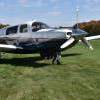High Fuel Pressure
-
Members Online
- Aerodon
- kaba
- GMBrown
- skydvrboy
- Echo
- Philthe123
- Jon Martin
- Brian Coate
- bcg
- EricJ
- eman1200
- TCC
- Schllc
- Jblanton
- MB65E
- N201MKTurbo
- jetdriven
- Bolter
- Hradec
- Skyland
- ta2too
- drstephensugiono
- Stealth Mooney
- Bruce Graham
- N800DD
- Shadrach
- NickG
- Christian S
- Fritz1
- Danb
- jeff s
- MoonFlyer68
- FlyingCanuck
- Paul Thomas
- Guillaume
- Zippy_Bird
- ArtVandelay


Recommended Posts
Join the conversation
You can post now and register later. If you have an account, sign in now to post with your account.